Savage 64
First impressions
This rifle is a strange piece for me to review, because it is very much off my beaten path. I am not a huge fan of semi-automatic rifles, because they are not as accurate as
comparably priced bolt-action rifles. A while ago I bought Ruger 10/22, shot it for a while, and sold it after realizing that it will never shoot as well as a similarly priced Savage MKIIFV.
A while ago, however, I needed to top off an order to get free shipping, and Savage 64 was in stock at the distributor with the price tag of just a tad over $100, wholesale. So I said,
heck, why not, I might as well try it out. It then sat in my safe for about a year before I got a chance to explore it.
The rifle itself, as you should expect for $100, is very basic. It comes with primitive iron sights, but the receiver is grooved to accept standard rimfire 11mm dovetail rings. Unlike
the rest of Savage lineup, it lacks Accutrigger. The stock is synthetic, and looks reasonably solid. The magazine is made of rather thick rolled steel sheet, and is massive. The trigger
pull is OK - not too heavy, not too soft, not super crisp, but also not very creepy. You can shoot it for a while before your trigger finger gets tired.
Here it is, whit a bipod and a Tasco 3-9 scope.
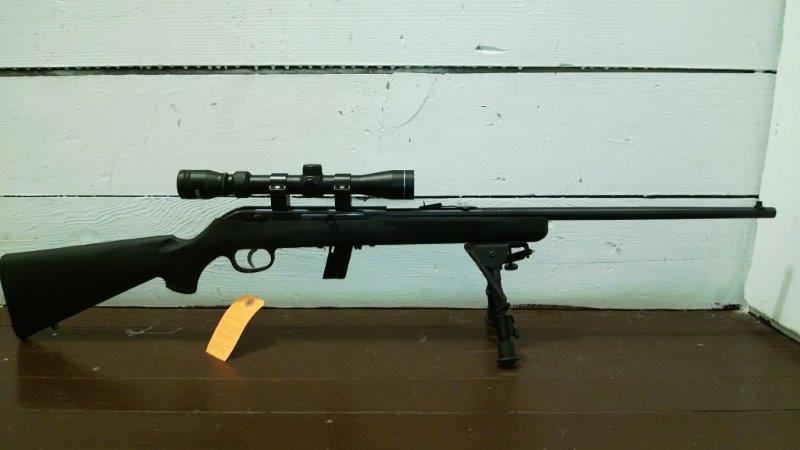
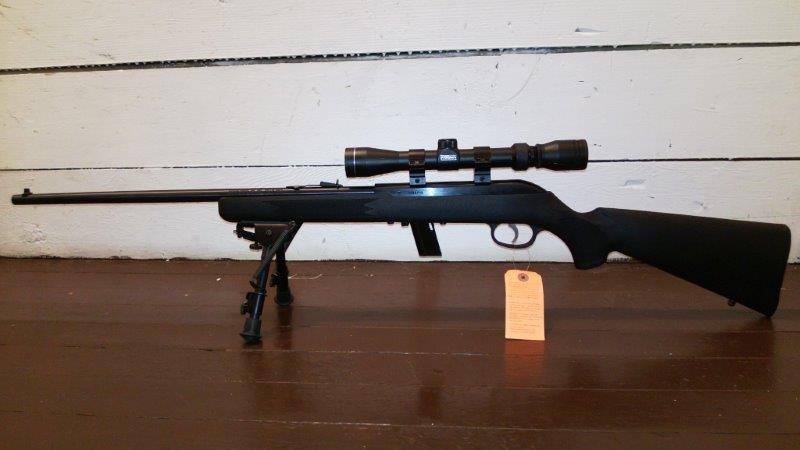
Action close-up, the magazine and the magazine well.
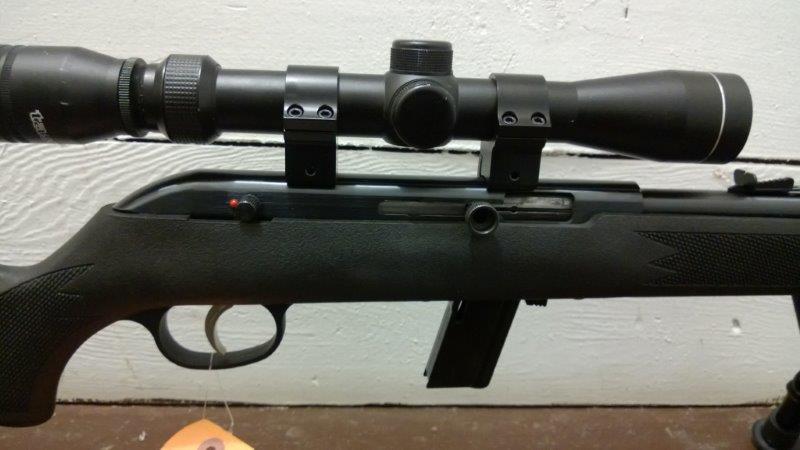

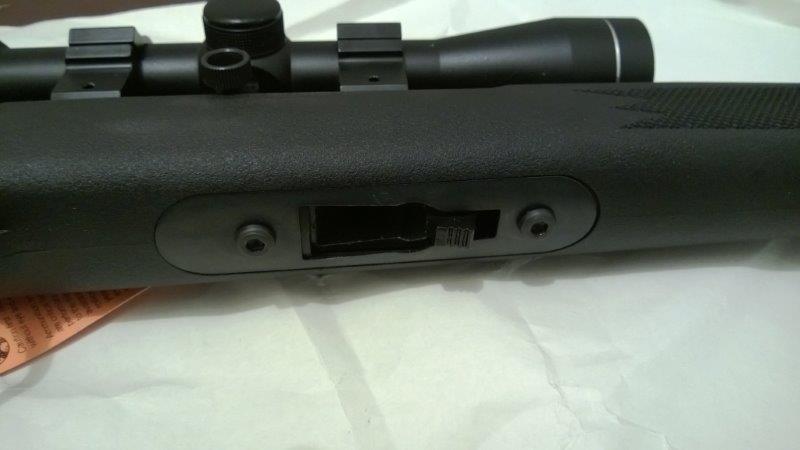
The first time I took it to the range, I was very disappointed. At 50 yards, the rifle shot literally every which way. Here is its first two targets (the bull diameter is 1"):
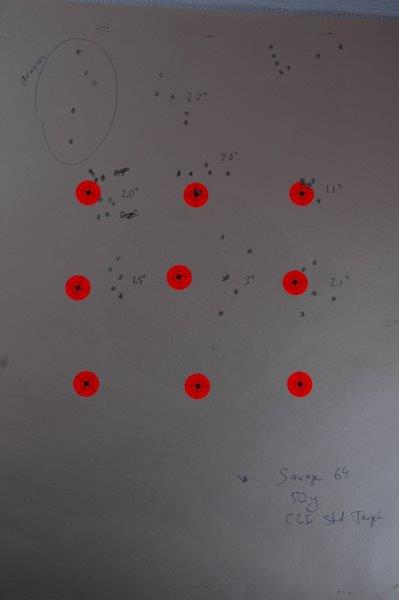
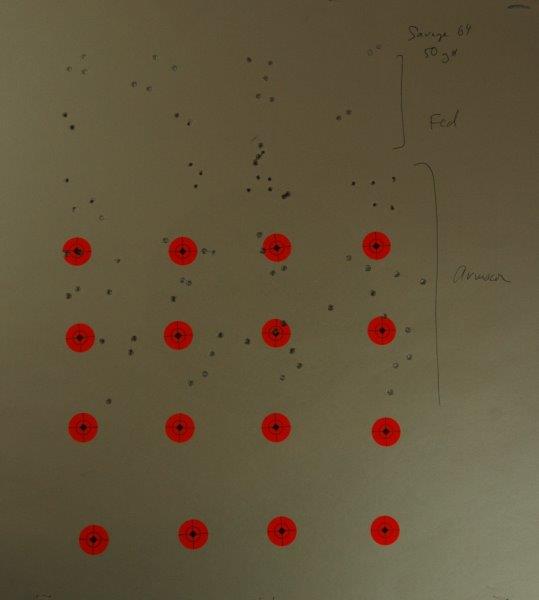
Shooting 5-6MOA groups is not OK for a modern rifle, in my opinion, so I considered sending it back to Savage, no refund required, just so they'd be ashamed. Before doing this though,
I thought I would disassemble it and see what it looks like inside.
Disassembly
The disassembly starts with removing action bolts that also hold the magwell plate.

The stock then comes off to reveal this:
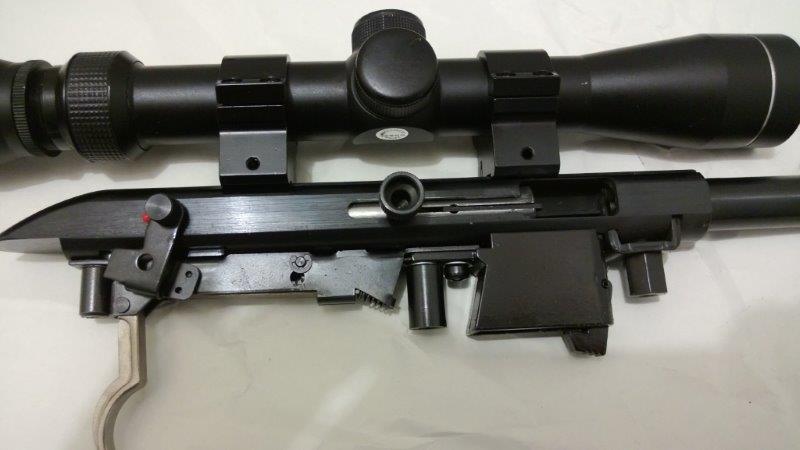
Magwell and barrel clamp:
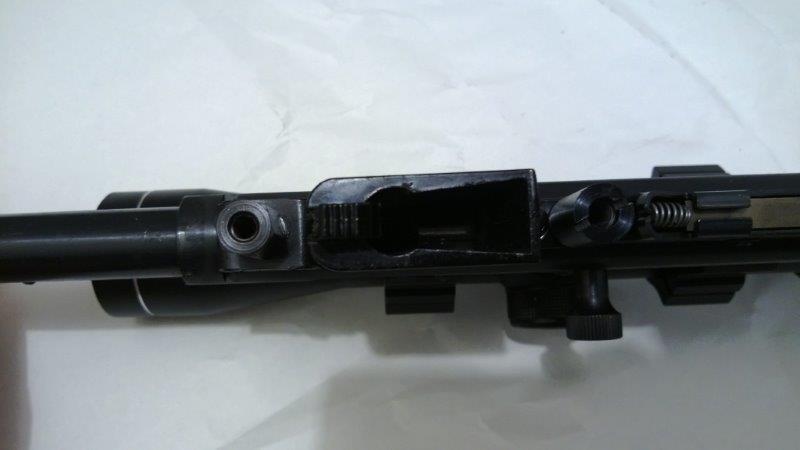
Close up, barrel clamp:

Magazine screw and second action lug nut:
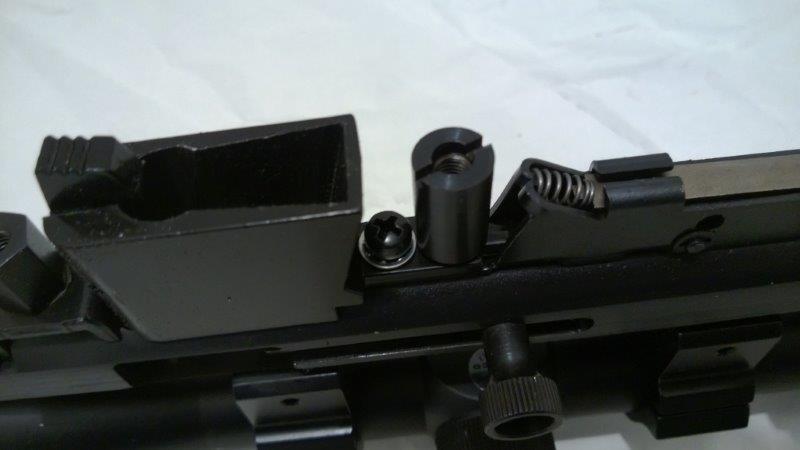
Trigger assembly bolt:
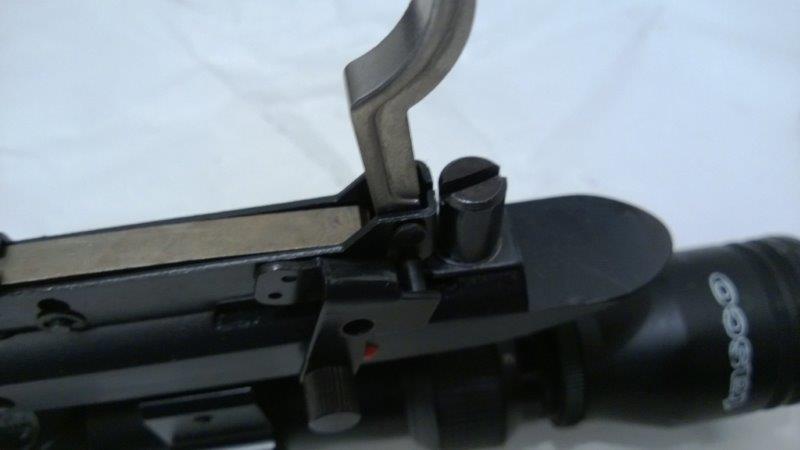
Removing these...
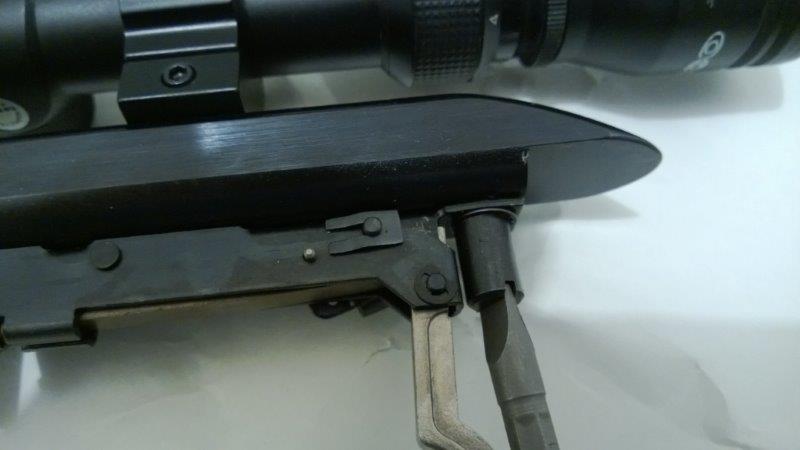
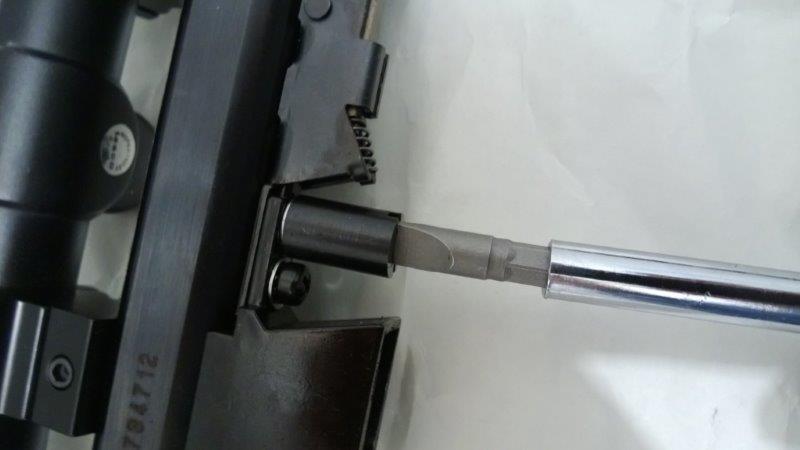
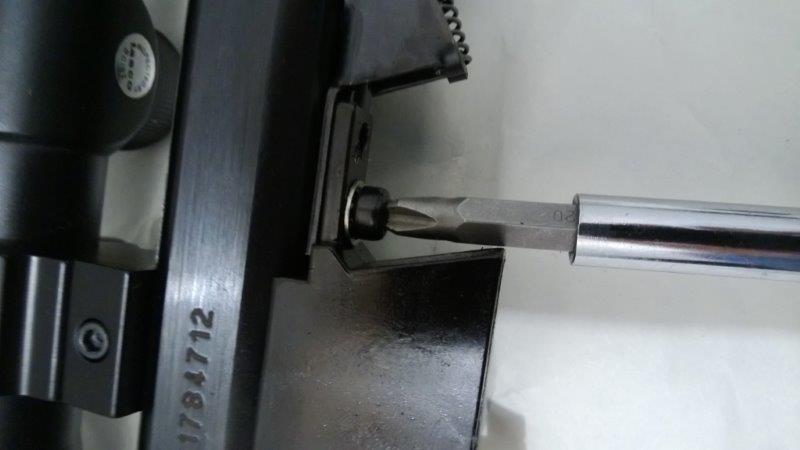
...separates the magazine well and the trigger from the receiver:
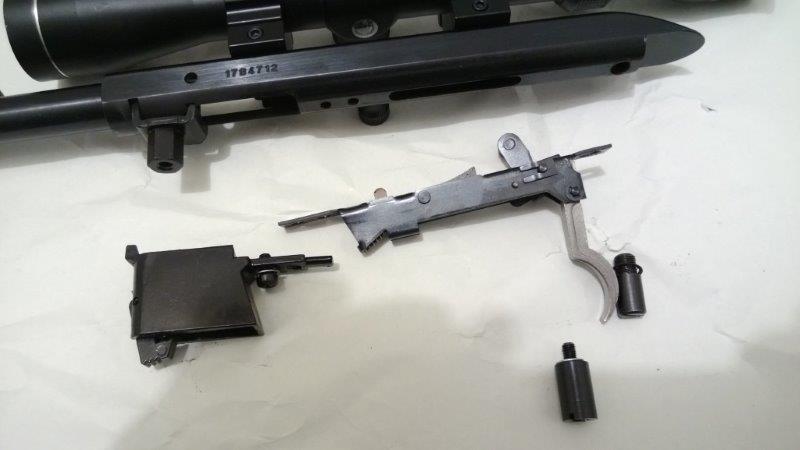
Here is the sear...
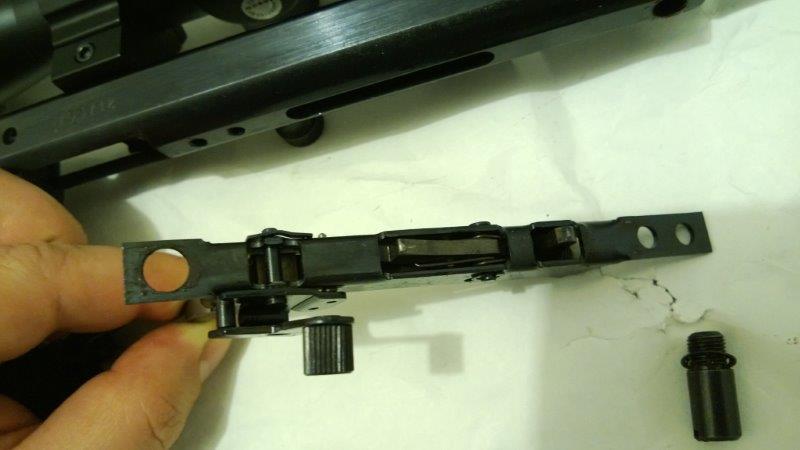
...and the bottom of the receiver...

This is how receiver now looks from the side:
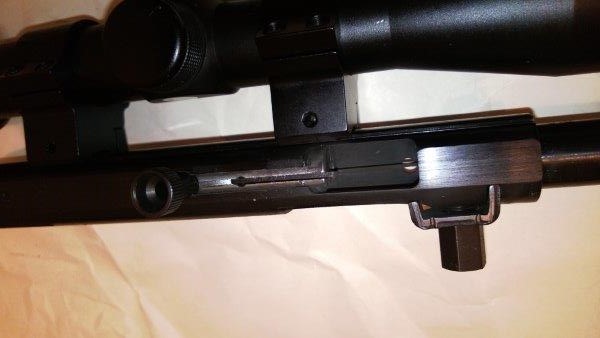
Unbolting the barrel clamp...
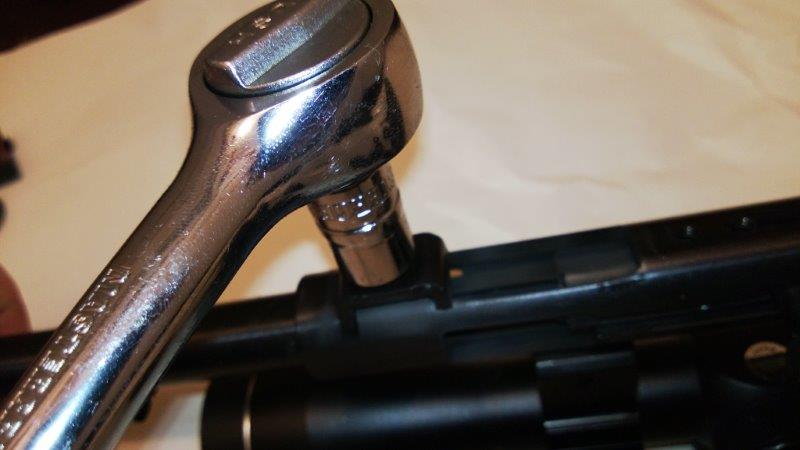
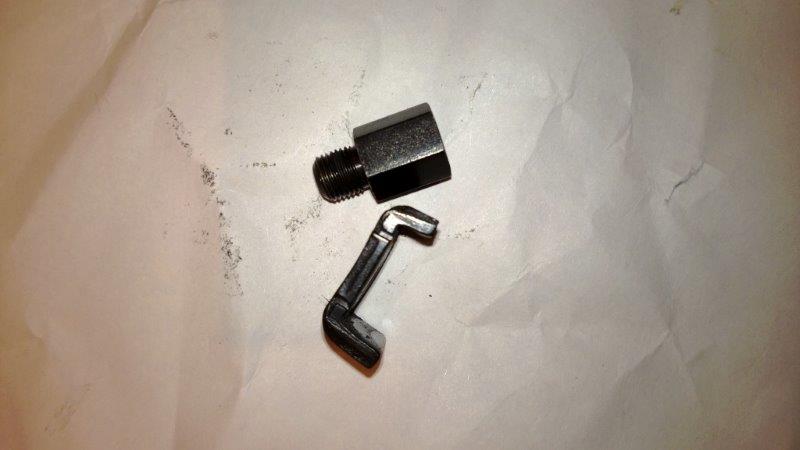
And the barrel comes out. When I unscrewed it, I noticed that the clamp was a bit loose.
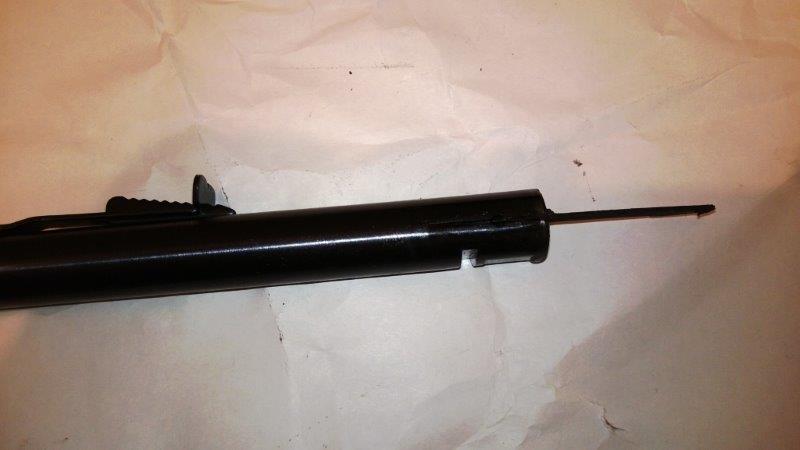
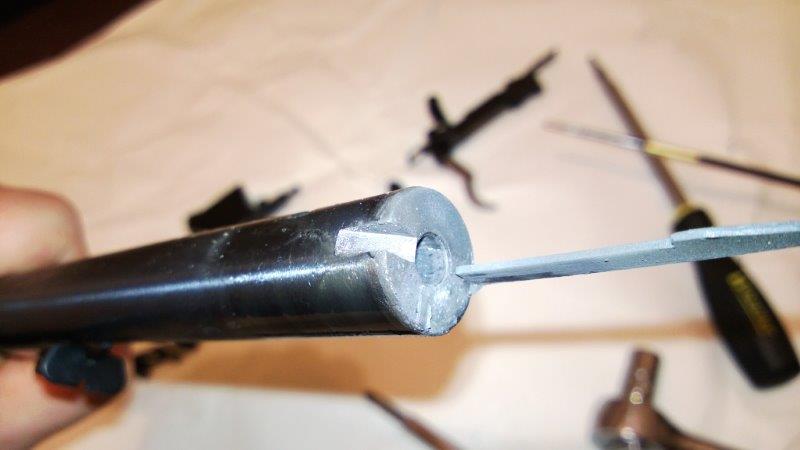
Receiver:
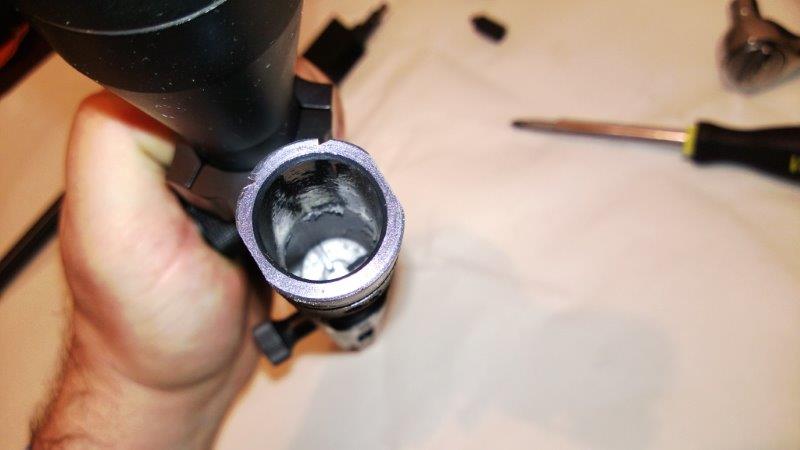
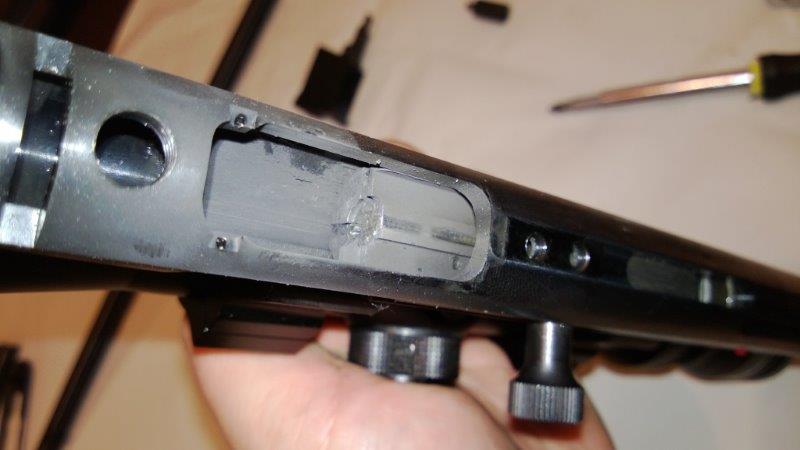
The bolt slides a bit forward, and the handle comes out.
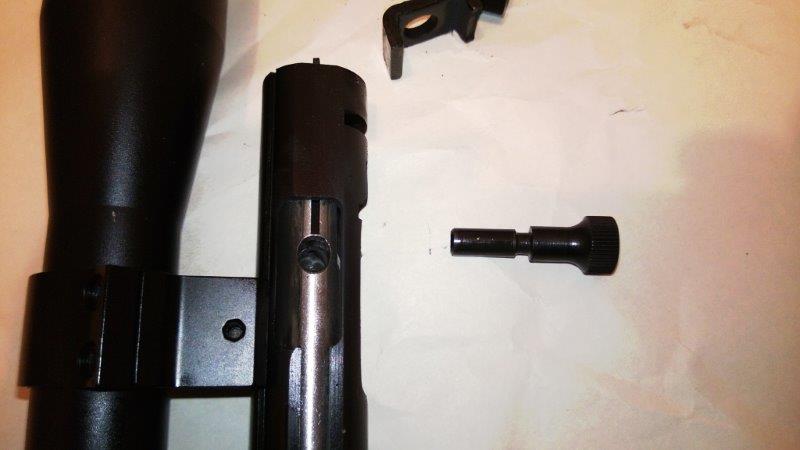
After that, the bolt simply falls out.
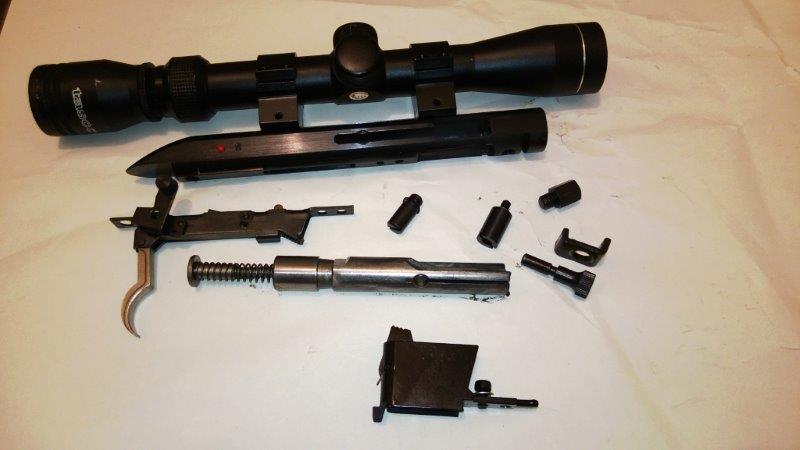
Of all the design, I see the barrel clamp as the most problematic. If it's screwed in too little, the barrel would move slightly on firing, and the accuracy will suffer.
Screw it in too much, and the clamp deforms. I would much rather have a design similar to 10/22 where the barrel has a bracket that is held to the receiver with screws. It would
obviously be a few bucks more than the current design, but it would be worth it.
Back to the range
The rifle cleaned and reassembled, I decided to give it another try. The groups became a lot tighter.
First target:
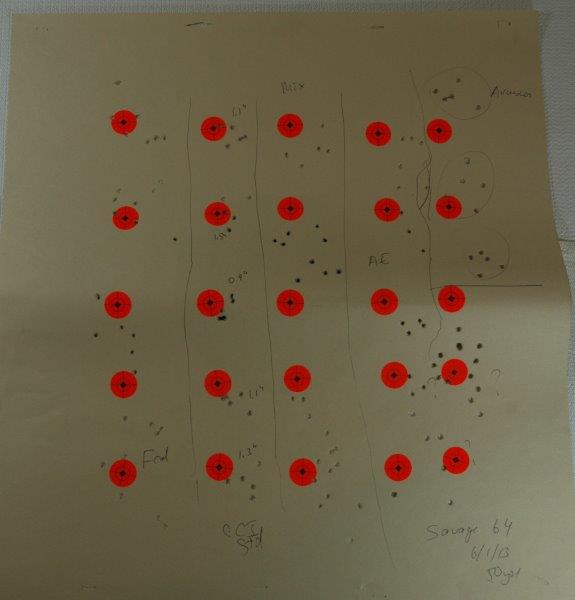
Second target, the next day:
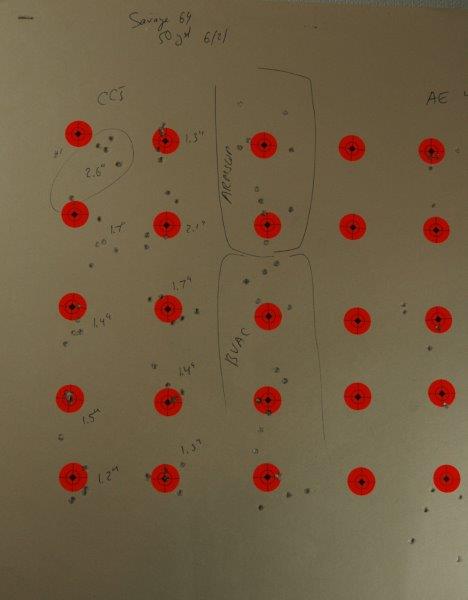
As you can see, while the groups have improved over the first target, most ammunition is still not doing all that well. However, CCI Standard Target was much better than most,
shooting groups mostly around 1" (at 50 yards).
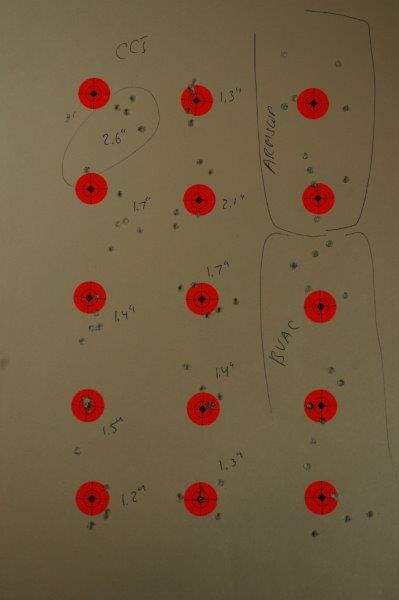
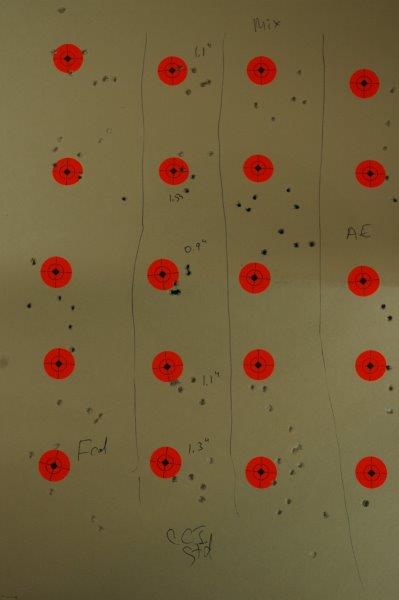
Here are the numbers for CCI:
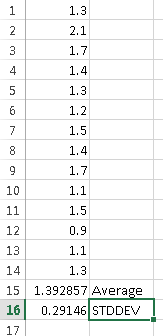
The average group is 1.4+/-0.3, so 95% of your groups will be below 2" at 50 yards. Not good by any bolt rifle standard, but if I remember the way my 10/22 used to shoot,
similar performance, at half the price of 10/22. But I do remember that 10/22 had similar accuracy with more than one brand ammunition.
In conclusion
Savage 64 is a very cheap semi-automatic plinker. Its accuracy is nowhere near most (all?) bolt action guns I've shot. It is, however, cheap. If the money is not the highest order bit,
and if you insist on semi-auto, Ruger 10/22 will be more accurate with more ammunition and more extendable. If the budget is the highest priority, its accuracy with CCI standard target
ammunition is similar to the 10/22 at about half the price.